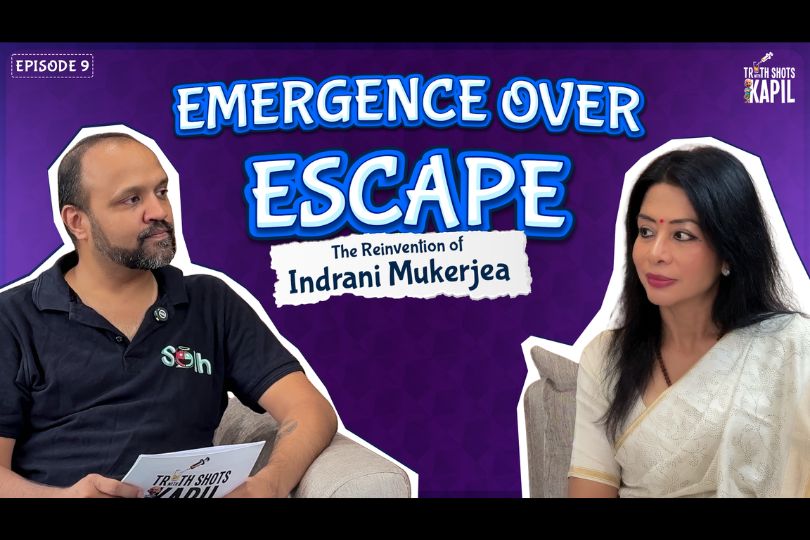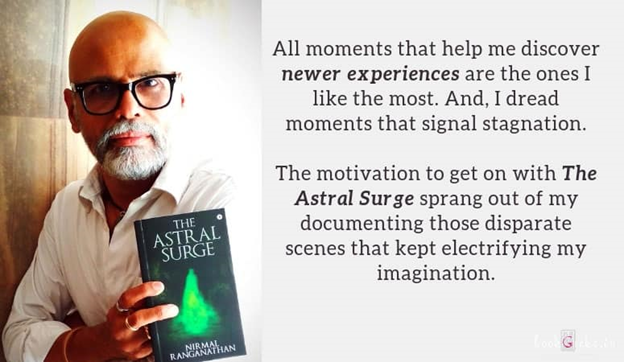Interview with Anand Neelkanthan, Author of “Valmikis Women: Five Tales from Ramayana”
Explore the insightful interview with Anand Neelkanthan, the author of 'Valmiki's Women: Five Tales from Ramayana' on Frontlist.on Nov 10, 2023
.jpg)
Anand Neelakantan is the author of the Baahubali trilogy, the prequel to S.S. Rajamouli's blockbuster movie. Neelakantan is also the author of Asura: Tale of the Vanquished, which told the Ramayana from Ravan’s point of view. He followed it up with the tremendously successful Ajaya series. Neelakantan’s books have been translated into more than nine languages, including Indonesian. Neelakantan is also a prolific writer in Malayalam and regularly publishes stories in the prestigious Malayalam magazine. He is also a cartoonist. He lives in Mumbai with his wife Aparna, daughter Ananya, son Abhinav and pet dog, Jackie the Blackie.
Frontlist: "Valmiki's Women" offers a unique perspective on characters like Bhoomija, Shanta, Manthara, Tataka, and Meenakshi. How did you decide on these particular women to feature in your book?
Anand: Valmiki's women is a part of a greater universe that I started creating from the book Vanara. After my novel Asura, I wrote the screenplay for Siya Ke Ram, a Star TV television series that told the Ramayana from Sita's perspective. In Vanara, I explored Tara's version of the story. But some characters in Ramayana won't lend to full-length novels but are interesting. These characters have been relegated to the margins, but Ramayana achieves another dimension if seen from their perspective. So, I took the characters in the margins and told their stories. Only Bhoomija is an exception to this, but in the short story Bhumija, I am not talking about Sita but the idea of Sita sprouting in the poet's mind. Shanta, Soorpanakha, Tatak, and Manthara have their own Ramayana to tell as they all have been marginalized in the traditional narrative. I am also developing a part two to Valmiki's women and Vysa's women as a part of the series.
Frontlist: The portrayal of women in ancient texts can vary widely. How do you see the women of the Puranas in the context of modern times?
Anand: The portrayal of women in ancient Ramayanas is surprisingly modern. It is only the medieval Ramayanas, starting from Tulsidas, that portray a more submissive and timid way. Also, the folk versions of Ramayana and Mahabharata render well to the modern take. If an author depends more on Sanskrit texts and folk tales and less on medieval devotional texts, many values resonate with modern times.
Frontlist: What challenges did you face while writing such an engaging book? Also, how did you manage to do profound research on each character of the book?
Anand: The oral tradition of India heavily influences my storytelling. I grew up being immersed in such a culture. I depend more on intuition while writing than research. The research materials available in the public space tend to be very narrow in scope and have researchers' biases. The storytelling tradition of India spans many centuries and is rich and deep. Not even a fraction of its scope and sweep have been captured by research institutes. For example, the critical editions of Mahabharata took almost five decades to complete and could only collect a small fraction of stories from only eight languages. The same is the case with Ramayana. I would rather dig into the classical and folk theatres that I grew up with than any dry research book while crafting my characters.
Frontlist: Sita, one of the most iconic characters in Indian mythology, is portrayed differently in your book. How do you view her character and her role as perhaps literature's first single mother?
Anand:I have portrayed Sita differently in my different books and different television shows that I wrote. Sita in Asura is different from Sita in Valmiki's Women. Sita in Siya Ke Ram is different from either of these. And now, I am scripting Ramayan for another major channel, and this Sita will be different to all the above. All are right and appropriate for the characters' change as per the perspective I choose to tell from. There are countless versions of Sita, Rama, Hanuman, and Ravana across various Ramayanas. Sita as a single mother is a concept explored by many classical Sanskrit poets and other Indian classical language poets and dramatists. I am just following their footsteps. Modern Indian understanding of Ramayana has been shaped by the television series of 1980s, which was more or less based on Tulsidas Ramayan. However, that is just one version of it. My retellings draw from much older texts, which, as I explained earlier, appear to be more modern and feminist in their approach than the medieval devotional texts. They were written by a confident civilization, while devotional literature rose during a turbulent period in Indian history, where it faced many foreign invasions and subjugation. So, the position of women had slipped a lot from what it was in the classical period.
Frontlist: In your opinion, how important is it for young readers to explore Indian mythology?
Anand: Myths play an essential part in making us who we are. But in India, these stories are not just mythology. They are not history too. These are beyond that. These stories have shaped our civilization, language, philosophy, culture, poetry, art, painting, sculpture, and values. Knowing their diversity and richness is critical in this era where social media is creating monomyths and idiotic narratives of 'us versus them' and 'we are good, and rest all are bad.'
Frontlist: Your previous works, such as "Asura" and "Ajaya," also reimagine well-known mythological tales. What drives your passion for retelling these stories with a fresh perspective?
Anand: I am offering a classical perspective rather than a fresh perspective. More than two thousand years ago, Bhasa wrote plays like Oorubhanga, Karnabhara, Pancharatra, etc, which sympathized with Karna, Duryodhana, etc. Bhavabhuti had created his own spin fifteen centuries ago. Languages like Kannada, Malayalam, Tamil, Bengali, etc have always produced such counter-narratives for centuries. There are temples for Duryodhana and Ravana. There is no concept of God versus Satan in Indian belief systems or culture. We were always confident to question, criticize, debate, and offer counter-views in our classical age. We lost it due to quirks of history and developed blind faith during the Bhakti era. The Bhakti era gave beautiful poetry, art, temples, etc and smoothened caste differences, but it also took away our critical thinking. The era of debates that Upanishads celebrate had vanished to be replaced by blind faith. It was an escape mechanism of a wounded civilisation. Now, when India is rising again, we must regain our confidence. Such confidence can be regained only when debate, criticism and rational thinking flourish. Everything about the past is not glorious or great. Many things that have served their use need to be discarded. Varna Ashrama and its byproduct caste or Jaati, is an example of a practice that has lost its relevance and needs to be discarded. And self-criticism is an integral part of this process. A writer's duty is to show the mirror to society, and I strive to do the same through my work.
Frontlist: What do you hope readers will take away from "Valmiki's Women" after reading your contrarian interpretations of these characters?
Anand: That there is another side to everything. Perspectives matter. One person's right can be another person's wrong. In a world of conflict, perhaps this understanding may help to calm some chaos.



.jpg)






.jpg)

.jpg)

.jpg)
.jpg)
.jpg)
.jpg)

.jpg)










Sorry! No comment found for this post.